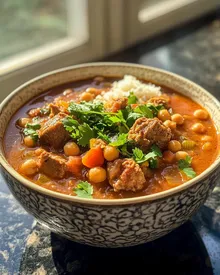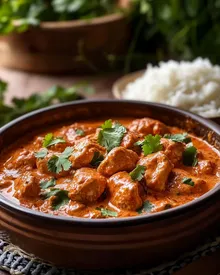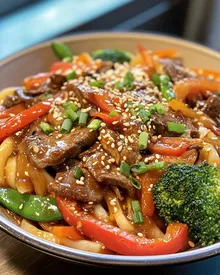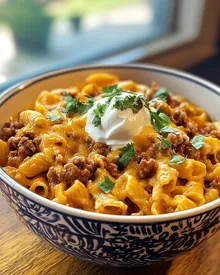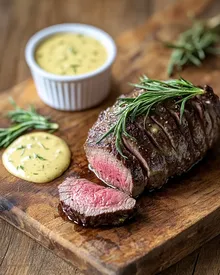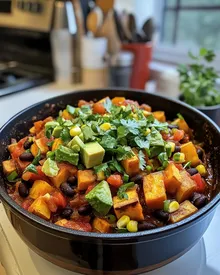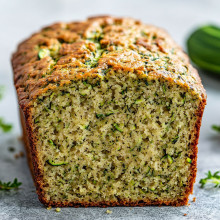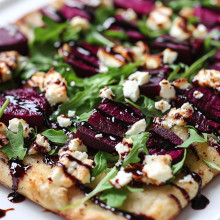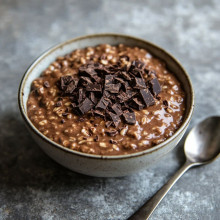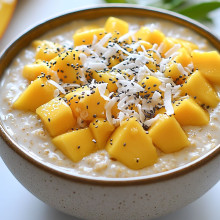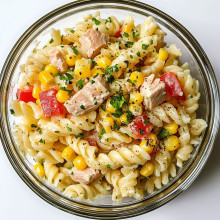Korean Bibimbap Bowl Made Fast
Published: 29/08/2025 By Liam Johnson
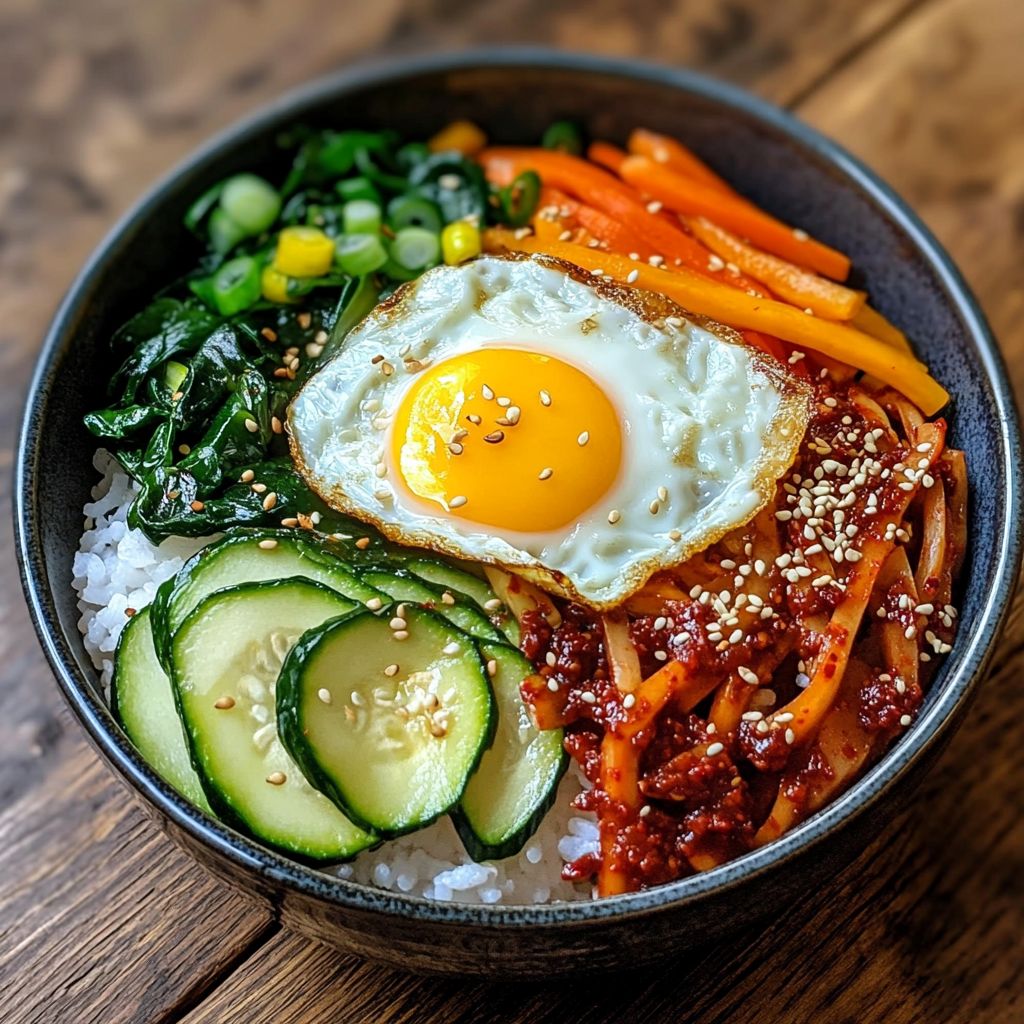
There's something undeniably captivating about the vibrant colors, enticing aromas, and mouthwatering flavors fused together in a traditional Korean Bibimbap. This beloved dish has taken the culinary world by storm, becoming a staple in many homes and restaurants worldwide. Imagine a bowl brimming with perfectly cooked rice, an array of sautéed vegetables, a protein of your choice, and a drizzle of spicy gochujang sauce, all harmoniously mingling in a delicious dance of taste and texture. Each ingredient is more than just a component; they represent a balance of nutrition, culture, and soul that truly sets Bibimbap apart.
In Korea, Bibimbap is more than simply a meal; it's an experience. A symphony of textures and flavors, it's often thought of as a representation of the harmony within Korean culture itself. The concept of "bibim," meaning mixed, reflects the idea of getting different elements to work together in perfect unison. Traditionally enjoyed as part of a communal meal, Bibimbap encourages sharing and togetherness. But what if you could bring this extraordinary dish right into your kitchen and enjoy it on an ordinary weeknight? Enter our method for a Korean Bibimbap Bowl Made Fast – a simple approach that doesn't compromise on the vibrant authenticity and delicious outcomes that this dish promises.
This fast Bibimbap recipe unlocks the door to a world of culinary exploration, allowing you to thoughtfully construct a satisfying bowl in less time than you might think. With a few core ingredients and a touch of creativity, you can personalize each bowl to suit your unique tastes while maintaining the essence of the original dish. No need for complicated cooking methods or hard-to-find ingredients! Whether you're a seasoned home cook or just starting out in the kitchen, this recipe is designed with ease and convenience in mind, making it accessible to anyone who craves the delightful flavors of Korea.
The magic of Bibimbap lies not only in its ingredients but also in the method of preparation. With our fast variant, fresh vegetables are quickly sautéed, proteins can be grilled or stir-fried in moments, and you can often use leftover rice – transforming what may otherwise be a regular meal into something extraordinary. Feel free to go beyond the classic ingredients of spinach, carrots, and bean sprouts; even with a few fresh herbs or leftover roasted vegetables, your Bibimbap can become a creative outlet that speaks to your own culinary preferences and dietary needs. This versatile dish can easily adapt to fit vegetarian, vegan, gluten-free, or protein-packed desires, ensuring that everyone can enjoy this colorful feast.
Have you ever been overwhelmed by meal prepping or the thought of spending hours in the kitchen? With this speedy adaptation of Bibimbap, you're invited to turn that hesitation into excitement. The charm of this dish lies in its adaptability—taking an age-old recipe and reimagining it for a fast-paced lifestyle. The crux of the experience remains centered around a beautifully layered bowl that marries all elements perfectly—each bite gilded with layers of flavor that dance together and awaken the senses. Whether you are whipping up a dinner for your family, impressing a date with your cooking skills, or needing a cozy meal after a long workday, this recipe promises to deliver.
As you engage with this dish, let's also take a moment to appreciate the harmony of flavors characteristic of Korean cuisine. At its core, Korean food emphasizes fresh ingredients, vibrant colors, and careful crafting of flavor profiles. The umami sensations that come from fermented ingredients, the crisp brightness of fresh veggies, the nuttiness from sesame oil, and the spicy kick from gochujang all come together in a whirlwind of delight. Creating a bowl of Bibimbap isn’t just about nourishment; it’s a way to connect with the deep history and cultural significance woven into each bite. As you prepare your ingredients, take the time to reflect on this journey and how food can bring stories and traditions together in tangible forms.
In many Korean households, Bibimbap is often enjoyed with a raw or lightly fried egg on top, offering a rich creaminess once mixed in. However, don't hesitate to experiment; whether you choose to add tofu, grilled chicken, or even snag the last slice of leftover protein from last night's dinner, there's no end to the variations possible. The key is to create a balance—each ingredient should shine without overpowering the others. Feel free to introduce influences from your kitchen—add in some unique sauces or spices that resonate with your palate, or layer in proteins that you love. The beauty of Bibimbap is in its adaptability and its encouragement towards culinary creativity.
Moreover, the presentation of your Bibimbap bowl can turn mealtime into an event. With striking colors and textures piled high, you can make your dining experience a feast for both the eyes and the palate. Use a wide, shallow bowl so that each ingredient can be arranged artistically, showcasing the colorful ingredients that beckon at even a glance. It's all about balance and layering; the polished beauty of the creation is in the eye of the beholder, making it something that everyone can appreciate. Don't forget to take a moment to enjoy this visual appeal before you dive in—a little mindfulness can turn a meal into a moment of joy!
So, gather your ingredients and prepare to embark on this culinary adventure. Engaging with the process of creating your Bibimbap bowl will bring you the exciting flavors and textures of Korean cuisine in less time than it traditionally requires. As you whirl together a concoction of tastes ranging from the spiced tang of gochujang to the fresh crunch of seasonal vegetables, you'll find that cooking can be a delightful path to creativity, well-being, and cultural appreciation.
As you savor the last bites of your homemade Bibimbap, take a moment to appreciate the experience not only as a meal but as a celebration of diverse flavors and cultures coming together in your kitchen. Happy cooking!
Ingredients
- 2 cups cooked rice
- 1 cup spinach, blanched
- 1 cup bean sprouts, blanched
- 1 cup carrots, julienned
- 1 cup zucchini, julienned
- 1 cup shiitake mushrooms, sliced
- 4 large eggs
- 2 tablespoons sesame oil
- 2 tablespoons gochujang (Korean chili paste)
- 1 tablespoon soy sauce
- 1 tablespoon sesame seeds
- 2 green onions, chopped
- Salt to taste
Instructions
- Heat a large skillet over medium heat and add 1 tablespoon of sesame oil.
- Add the shiitake mushrooms to the skillet and sauté for about 3-4 minutes, until they are tender. Season with a pinch of salt.
- In the same skillet, push the mushrooms to one side and add the julienned carrots and zucchini. Stir-fry for an additional 3-4 minutes until they are slightly softened.
- In a separate pot, bring water to a boil and carefully add the eggs. Boil for about 6-7 minutes for soft-boiled eggs, then transfer them to an ice bath to cool.
- While the vegetables are cooking, in a large bowl, mix the cooked rice with the remaining tablespoon of sesame oil, soy sauce, and gochujang. Adjust seasoning with salt to taste.
- Divide the rice mixture into serving bowls.
- Top each bowl of rice with the sautéed mushrooms, carrots, zucchini, blanched spinach, and bean sprouts, arranging them in sections for a colorful presentation.
- Peel the cooled eggs and slice them in half. Place two halves on top of each bowl.
- Garnish with chopped green onions and a sprinkle of sesame seeds.
- Serve immediately, mixing everything together before eating for a delicious Korean bibimbap experience!
Notes
This Korean Bibimbap Bowl Made Fast is a vibrant and nutritious dish that can be whipped up in no time, perfect for a quick weeknight meal. The combination of fresh vegetables, protein-rich eggs, and fragrant sesame oil creates a deliciously balanced meal. You can customize your bibimbap by substituting vegetables based on what you have on hand or your personal preferences, such as adding bell peppers or radishes for some crunch. For a vegetarian version, simply omit the eggs or replace them with tofu.
The key to a good bibimbap is the quality of your gochujang, so choose a brand that suits your taste. This dish is typically enjoyed mixed together, allowing the flavors to meld, but you can serve it deconstructed for a beautiful presentation. Don’t forget to adjust the salt to your liking and drizzle some additional sesame oil for an extra layer of flavor. Leftover bibimbap can be reheated, making it a great option for meal prep. Enjoy with a side of kimchi for an authentic Korean experience!
Faq
What is Bibimbap?
Bibimbap is a Korean rice dish that typically includes a variety of vegetables, meat, a fried egg, and gochujang (Korean chili paste). The ingredients are usually served in a bowl and mixed together before eating.How can I make Bibimbap quickly?
To make Bibimbap fast, use pre-cooked rice, quickly sautéed vegetables, and leftover proteins such as chicken, beef, or tofu. Additionally, using a microwave to cook certain ingredients can save time.What vegetables are commonly used in Bibimbap?
Common vegetables for Bibimbap include spinach, carrots, zucchini, mushrooms, and bean sprouts. You can customize the vegetables based on your preference or seasonal availability.Is Bibimbap a healthy dish?
Yes, Bibimbap can be a healthy dish as it includes a variety of vegetables, lean protein, and is typically served with brown or white rice. It’s rich in nutrients and can be made with low-fat ingredients.Can Bibimbap be vegetarian or vegan?
Absolutely! You can easily make Bibimbap vegetarian or vegan by omitting meat and using tofu or mushrooms as the protein source. You can also replace the egg with avocado for a vegan option.What is gochujang and where can I find it?
Gochujang is a fermented Korean chili paste that adds a sweet and spicy flavor to dishes. It is commonly found in Asian grocery stores or online, and can also be substituted with sriracha mixed with a little sugar.Can I make Bibimbap in advance?
While Bibimbap is best served fresh, you can prepare the individual ingredients in advance and store them separately in the refrigerator. Assemble the bowl just before serving to maintain texture and flavor.What rice is best for Bibimbap?
Short-grain white rice is traditionally used for Bibimbap due to its stickiness, but you can also use brown rice, cauliflower rice, or other grains as a healthier alternative based on your dietary preferences.
Do you want to save this recipe?
Are you new to this website? This free email series is a great place to start. I'll walk you through some of my most popular recipes and show you how and why they work. You'll learn some practical concepts in the science of baking and quickly gain the knowledge you need to become a better baker.









